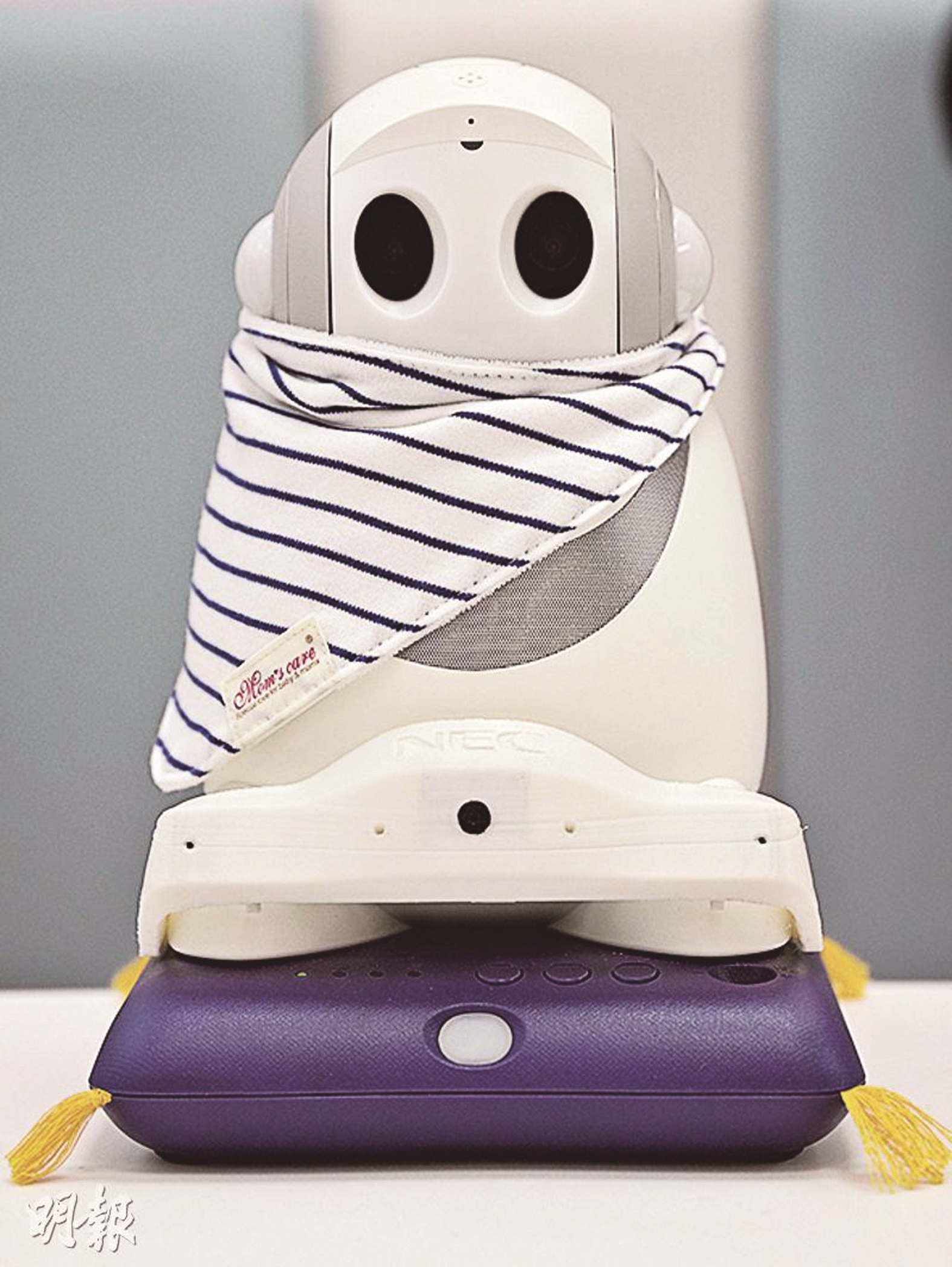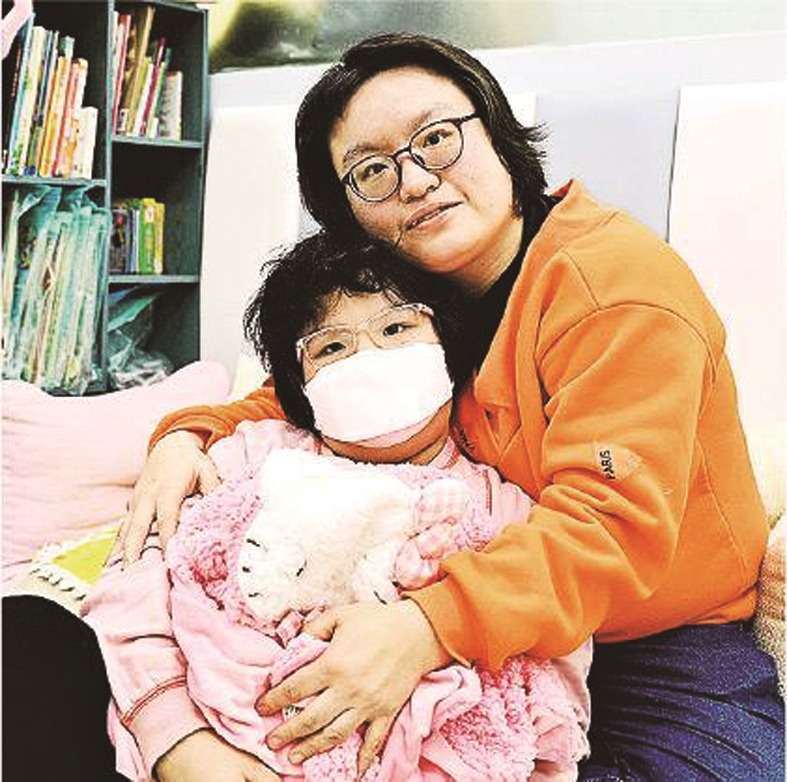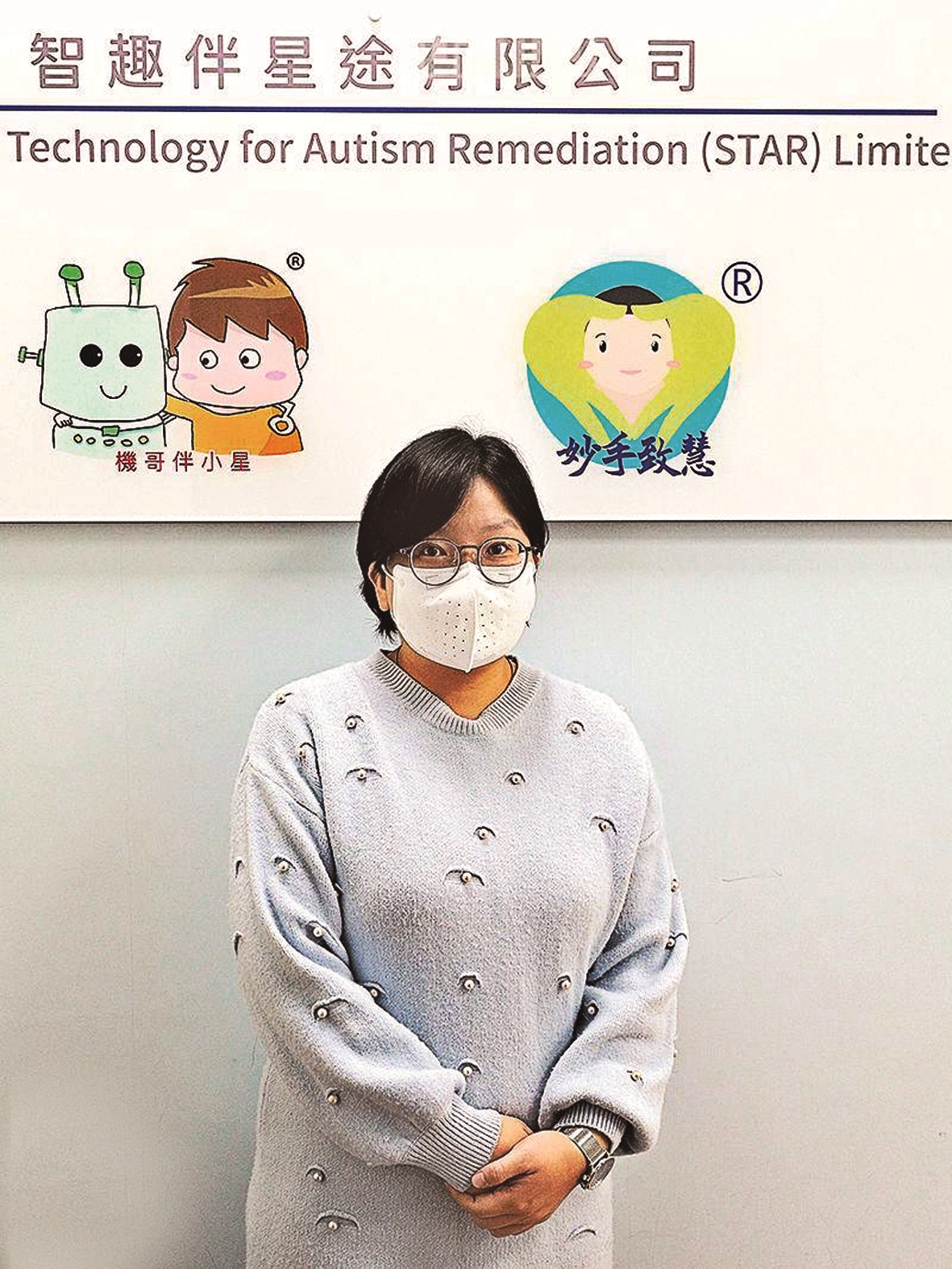[Special Topic for Autistic Children]Interpretation of daily situation intervention treatment plan AI robot helps autistic children learn to socialize
[ad_1]
Text◇Photo by Shen Yashi◇Lai Junjie, “Ming Pao”
(Hong Kong News)The chat robot ChatGPT has become popular all over the world, and it has triggered a lot of discussions about robots.
As artificial intelligence (AI) and robot technology develop more and more maturely, more and more different types of robots are playing a role in various professional fields.
A team from the Department of Educational Psychology of the Chinese University of Hong Kong is also the first in Hong Kong to use an AI social robot to carry out an interventional treatment plan for autism spectrum disorder (hereinafter referred to as autism).
Research results indicate that after school children complete relevant courses, the severity of autism is reduced by 25% to 30%, and their social communication skills increase by 20% to 25%.
“Hello! My name is Kinei, what’s your name? Can we be friends?” This kind of social opening statement is easy for 4 or 5-year-old children from “Earth”, but for children from “Planet” “For me, it has been very difficult.
The tone of voice puts children at ease
Qin Rui, 7 years old this year, was diagnosed with autism, attention disorder/hyperactivity disorder, developmental delay, and delayed language development by the Department of Health’s Childhood Assessment Center (CAC) when he was 2 years and 8 months old. Muse, the mother, described her daughter’s condition as “very backward”. “Both CAC and other psychologists have pointed out that Qinrui’s language development is about one and a half years slower than her peers. She does not know how to talk to others and lacks social skills.” . In the past, when she wanted to be friends with other people, she only knew how to ‘follow’ them, so she was often frightened of people. But because of Xiaoxing and Mung Bean, she continued to teach her, and now Rui’la’ ( I have become a lot smarter, I know how to introduce myself first, and I have started to make friends whether at school or at the Parent Resource Center.”
The “little stars” and “mung beans” Muse refers to are actually the latest batch of AI social robots introduced by Professor Su Yongzhi and his team from the Department of Educational Psychology at CUHK. Their mission is to interpret daily life situations and educate autism through drama. Social and communication skills of children with autism spectrum disorder.
So Wing-chi, who has just been appointed as an “International Leader” by the International Society for Autism Research (INSAR) and is the only representative from Hong Kong, has launched a social robot teaching program as early as 2015. The first generation is mainly used to demonstrate human gestures and Body language has been used in the second generation to perform creative dramas, and even today’s “Rapid Robot Accompanying Little Star” (RABI) project. She has always believed that robots that have no temper, can repeat themselves, and are predictable are the best choices for autistic children. The best study partner.
“Children with autism have very low motivation to communicate with others, and their learning model requires repeated consistent instructions and predictable conversations. This is more difficult for human teachers to achieve, because even if we speak the same words When speaking, it is difficult to ensure that the tone and tone are exactly the same every time, but the robot can do this, and the children will feel more at ease.”
Autistic children have no interest in contact with others
But back to the starting point, why should we deliberately teach and learn when we are just “talking” (chatting)? Su Yongzhi explained: “Many people misunderstand that children with autism live in their own world. As long as they are pushed out and exposed to more people, they will slowly make progress, but in fact this is not possible. This kind of children simply do not know how to observe through observation. To learn a skill, he will not learn it naturally, it must be absorbed through practice.”
So who is responsible for practicing with them? She said that since it is known that children with autism are not interested in contact with others, it is not a good idea to use human tutors as their only communication medium, so social robots are needed to intervene in the treatment plan.
RABI plans to use programmable robots, combined with teaching materials and courses designed by the team, to communicate with students aged 3 to 18 years old with different learning needs and language abilities in Cantonese, Mandarin or English. The robot can also use the lens to detect the children’s eyes in real time. When the AI detects that the child is “empty” or “wandering” through visual calculations, it will immediately instruct the robot to give prompts to remind the children to listen attentively.
Su Yongzhi pointed out that there are great individual differences among autistic children. In order to respond to their needs, the RABI program has constructed a very broad curriculum, “from personal self-care and making requests in the basic class to friendly behavior and daily life in the junior class. Everyday life language, as well as emotional interpretation and expression in intermediate classes, to dialogue communication and narrative in advanced classes, and even vocational training in advanced classes, as well as some special topics, such as sex education, facing bullying, etc., are covered in the course.” .


Cannot completely replace human teachers
However, she emphasized that social robots cannot completely replace human teachers, and the biggest feature of this project is the “integration of man and machine”! “In our classes, there are usually two instructors paired with two robots, and everyone has their own role.”
To put it simply, the two social robots are actors, responsible for acting out life situations, while the instructor is responsible for leading the class, including interpreting the plot, asking questions, etc. “For example, the ‘Xiao Xing’ who plays the role of an autistic child often uses only one “Oh” in response to what my friend “Didi” said. After our children watch the drama, they often don’t notice anything inappropriate about “Xiao Xing”. They need the instructor to ask further questions and guide them to think, and then Use ‘Little Star’ to re-demonstrate appropriate conversations, and then the children will imitate and role-play, and they will gradually master it.”
Su Yongzhi said with a smile that another important task of the instructor is to “guide” the robot to answer impromptu questions from the children.
“Children’s own voices are difficult to distinguish, and some autistic children have speech delays, so the robot cannot yet use the AI speech recognition system to understand the children’s speech and answer their questions. However, our Social robots all have a ‘text to speech’ function, so as long as the teacher inputs text on the spot, he can also use the robot’s ‘mouth’ to answer questions with the children.”
Muse has participated in the RABI program for more than a year, and Muse has witnessed her daughter’s progress. “I feel that her mood, speaking ability, social communication, and learning motivation have all improved significantly. The teachers at the child care center were aware of it. When she graduated from kindergarten, the school’s speech therapist re-evaluated Kinrui. The result was that her language and social skills had returned to the same level as her peers.”
Severity of autism reduced by 25% to 30%
After entering a mainstream primary school, Qin Rui was temporarily unable to participate in the RABI program due to heavy schoolwork, but she kept in mind what she had learned in the previous classes. Muse revealed that her daughter was bullied by her classmates at school earlier. What surprised her was that Shine was able to recount the whole incident and express her own feelings.
“Actually, before entering elementary school, RABI taught children how to deal with school bullying. She also watched the drama about ‘Little Star’ snatching the ‘Mung Bean’ toy, so when a classmate ruined the glue that the teacher had given her as a prize, Kinrui… Although her immediate reaction was that she was crying, but when I guided her to recall what she had learned in the RABI class, she was able to calm down slowly, ‘Yes, my brothers and sisters (tutors) taught me…’ She also This matter will be dealt with quickly.”
Since its launch in 2018, the RABI program has served more than 2,200 autistic children. According to the team’s research, after school children complete the course training, the severity of autism is reduced by 25% to 30%, and their social communication skills are increased by 20% to 20%. 25%, and their ability to recognize long sentences also increased by 20% to 30%, and their narrative ability also improved by more than 30%. When asked whether the fourth generation robot will be launched, Su Yongzhi said that it is under research. “I hope that future robots can detect the behavior of children to assess the severity of their autism and automatically adjust the course progress.” , optimize the training process”.
In order to help more families with “star children”, she and her team founded the social enterprise “Star-autism” in 2019 to provide personal and on-campus services. For more information, you can visit the organization’s website: star-autism.com


Practice social communication skills
Can’t learn to speak like a robot
The use of robots in teaching is nothing new. In the early years, AI robots were launched on the market to help children learn English, but everyone knew that most of them were gimmicks, purely to attract children’s attention.
Therefore, when I learned that a team from the Department of Educational Psychology at CUHK was using AI social robots to intervene in the autism treatment plan, the same thoughts flashed through the reporters’ minds.
This article discusses robots, but what I’m talking about is not the chatbot ChatGPT, but an artificial intelligence (AI) social robot specifically designed to train children with autism spectrum disorder (hereinafter referred to as autism).
Respect the special needs of autistic patients
Professor Su Yongzhi, the leader of the project, did not mince words. In addition to reporters’ doubts, many users, including schools and parents, said the first thing they said: “I don’t want my children (students) to be like robots!” and “Why use machines?” Humans, not humans?” is the biggest challenge for the team to promote the treatment plan. But she explained earnestly that the plan had consulted a lot of literature and had research evidence, “We are not using robots for gimmicks, nor are we using technology for the sake of using technology, but to respect their (autistic patients) special needs.”
Based on the characteristics of autistic children who do not like to communicate with others, Su Yongzhi advocated using robots as small tutors, encouraging children to practice social communication skills with the robots and imitate the robot’s responses. The reporter asked her if she was worried that her children would recite the robot’s lines word for word like a parrot in daily communication.
Rely on key words to respond to the outside world
She laughed and said, “I would be very happy if they could imitate the robot’s dialogue 100%, but that’s not the case.”
She said that children with autism generally do not know how to recite dialogue, so human tutors will try to bring out key words in the conversation. For example, when chatting about food topics, you can ask the other party: “Where did you go to eat?” “What did you eat?” etc. . However, she admits that social situations are ever-changing and robots cannot completely cover them. She only hopes that by listening and speaking more, children can rely on key words to give some responses to the outside world.

[ad_2]
Source link

![[Love Wants Sexual Happiness Series 358]Find the culprit and overcome psychogenic erectile dysfunction. Don’t let pressure affect your sexual happiness.](https://chinathenews.com/wp-content/uploads/2024/04/171111-780x420.jpg)

![[Wanqingyi Care]My health, my rights, customized medical methods in the last stage of life](https://chinathenews.com/wp-content/uploads/2024/04/ZZ1-100-780x420.jpg)
![[Kidney Transplantation Special Topic]The survival rate of transplanted kidneys is high without dialysis treatment three times a week](https://chinathenews.com/wp-content/uploads/2024/04/1311-780x420.jpg)



